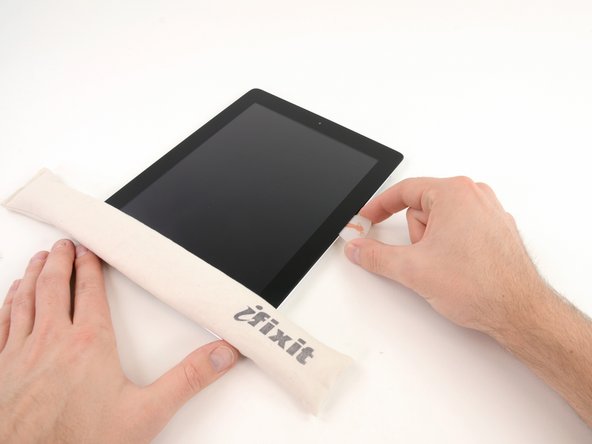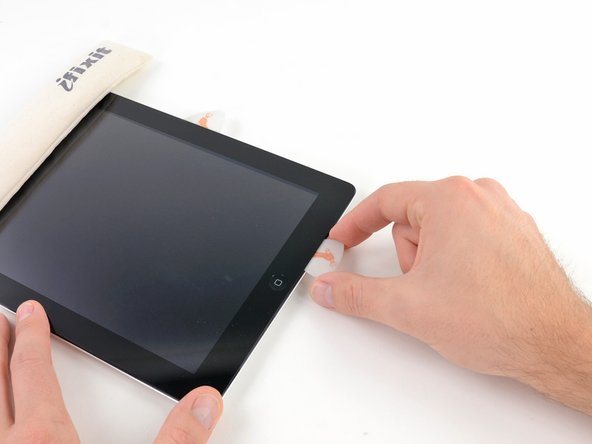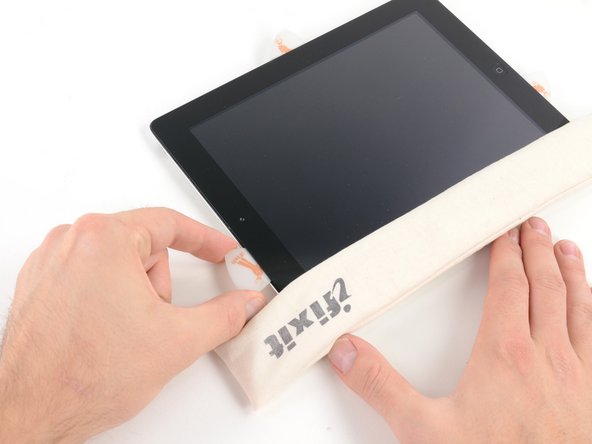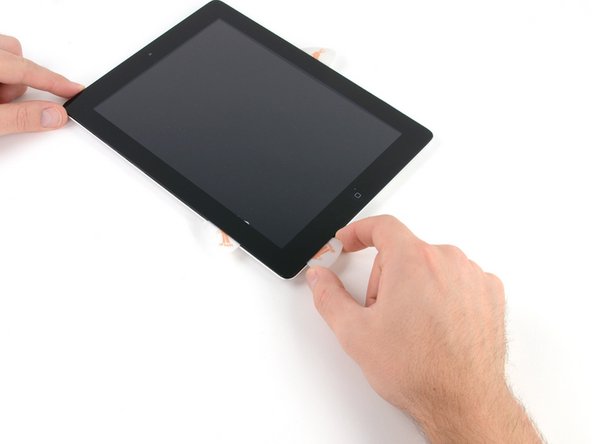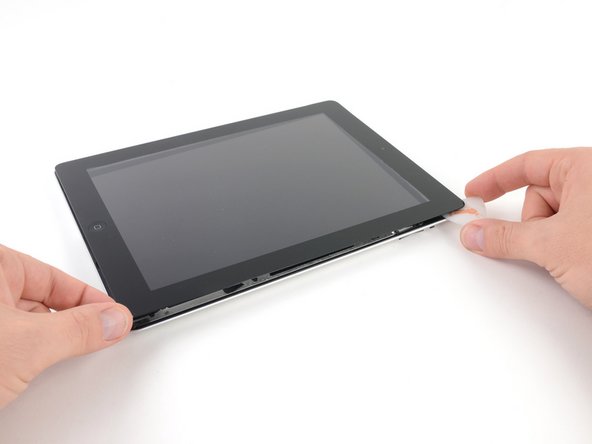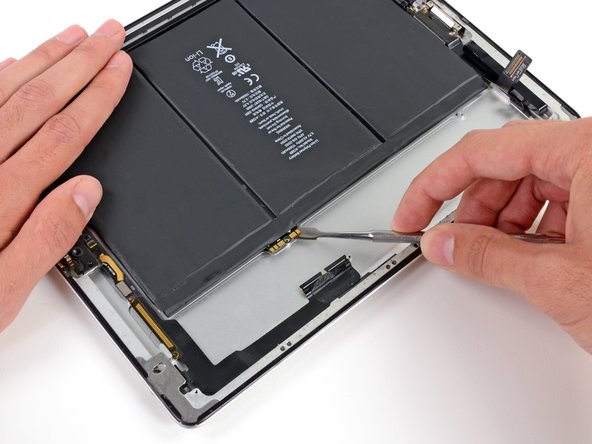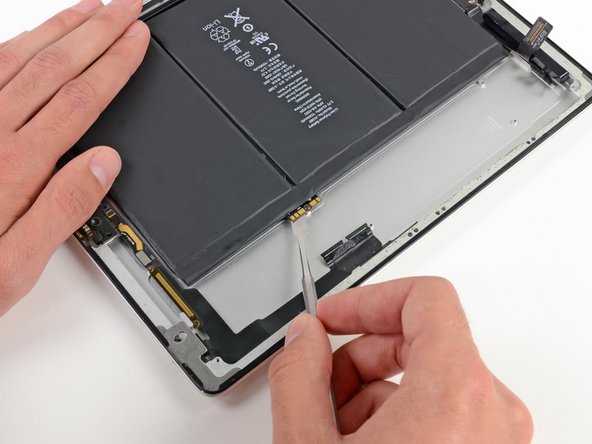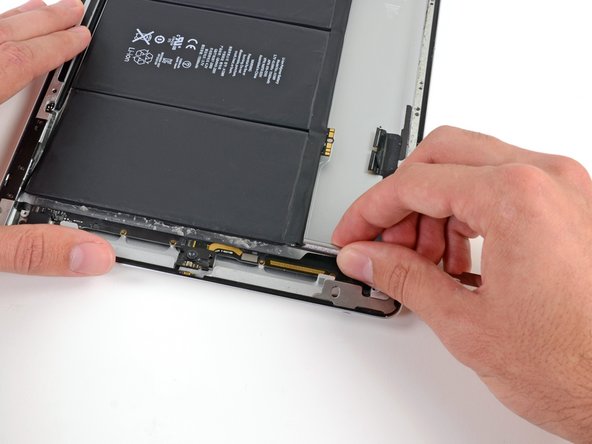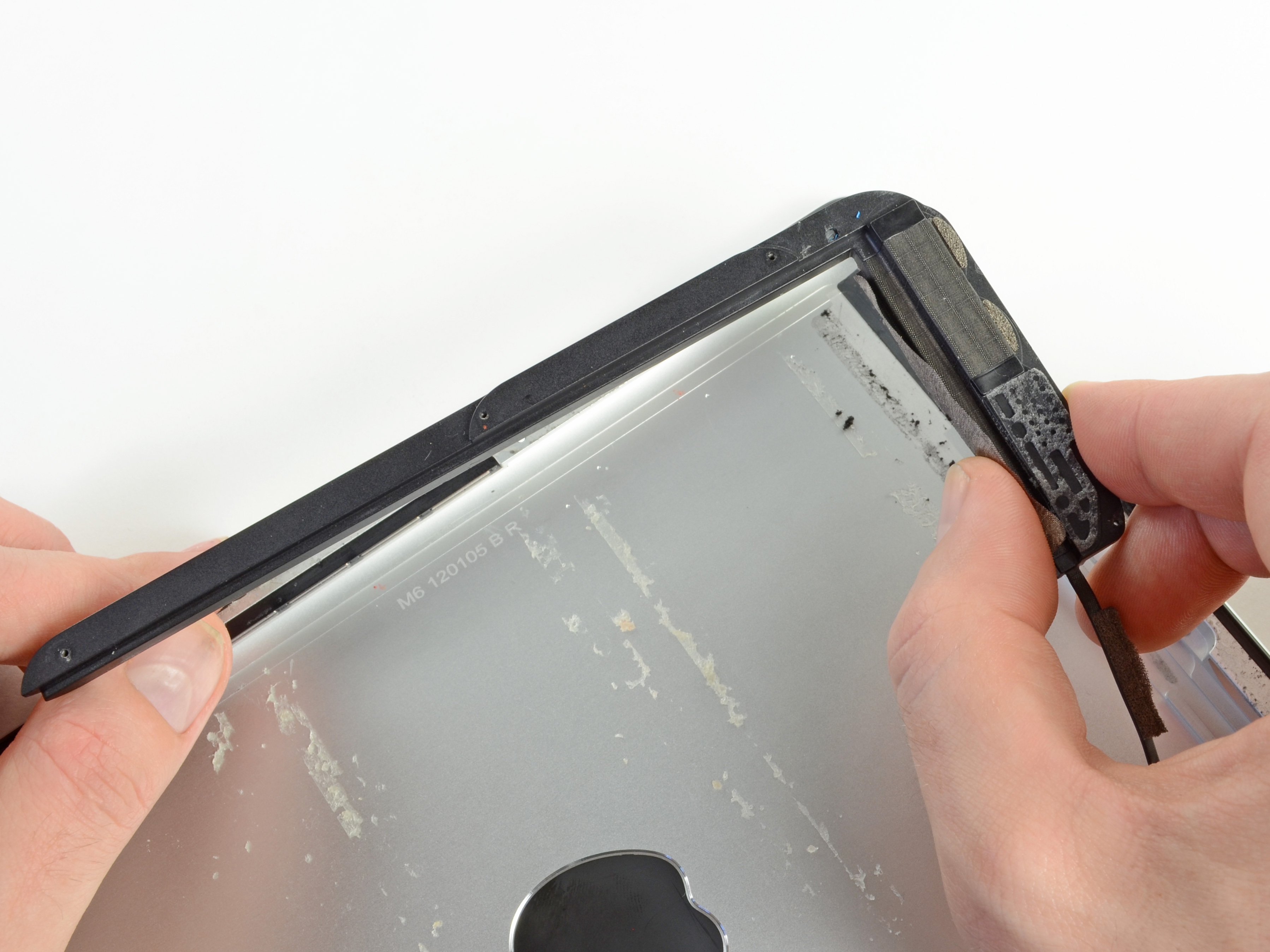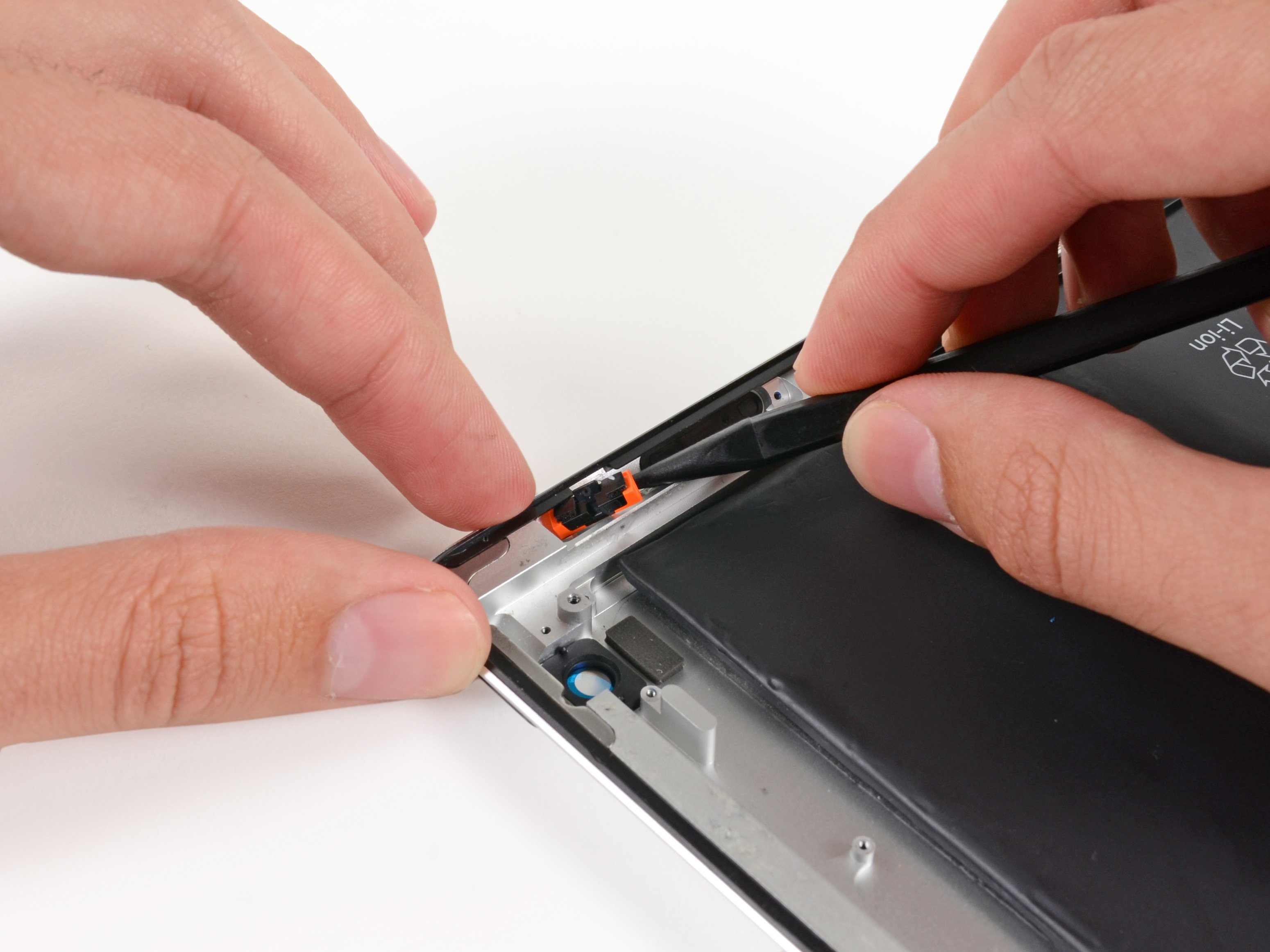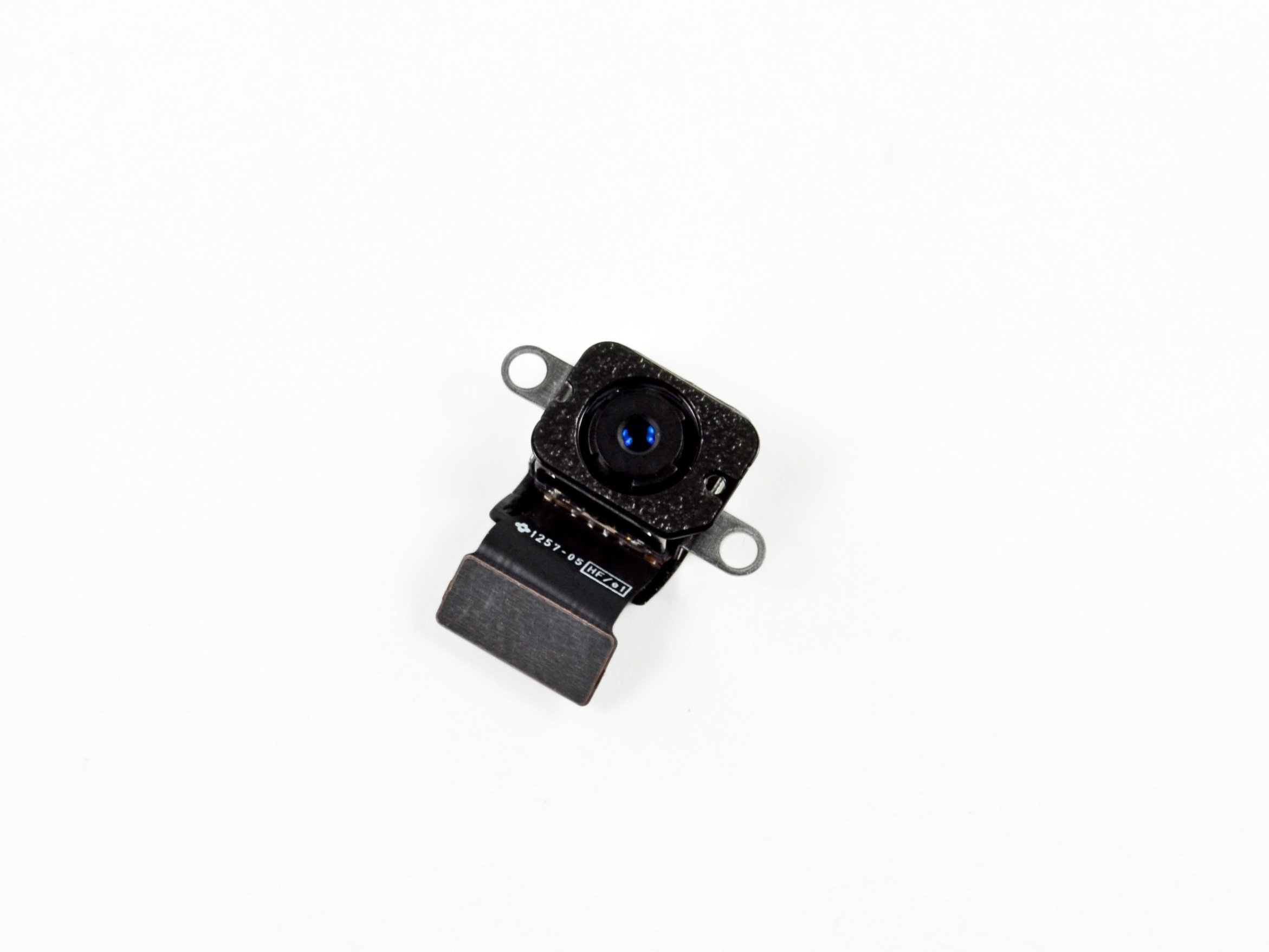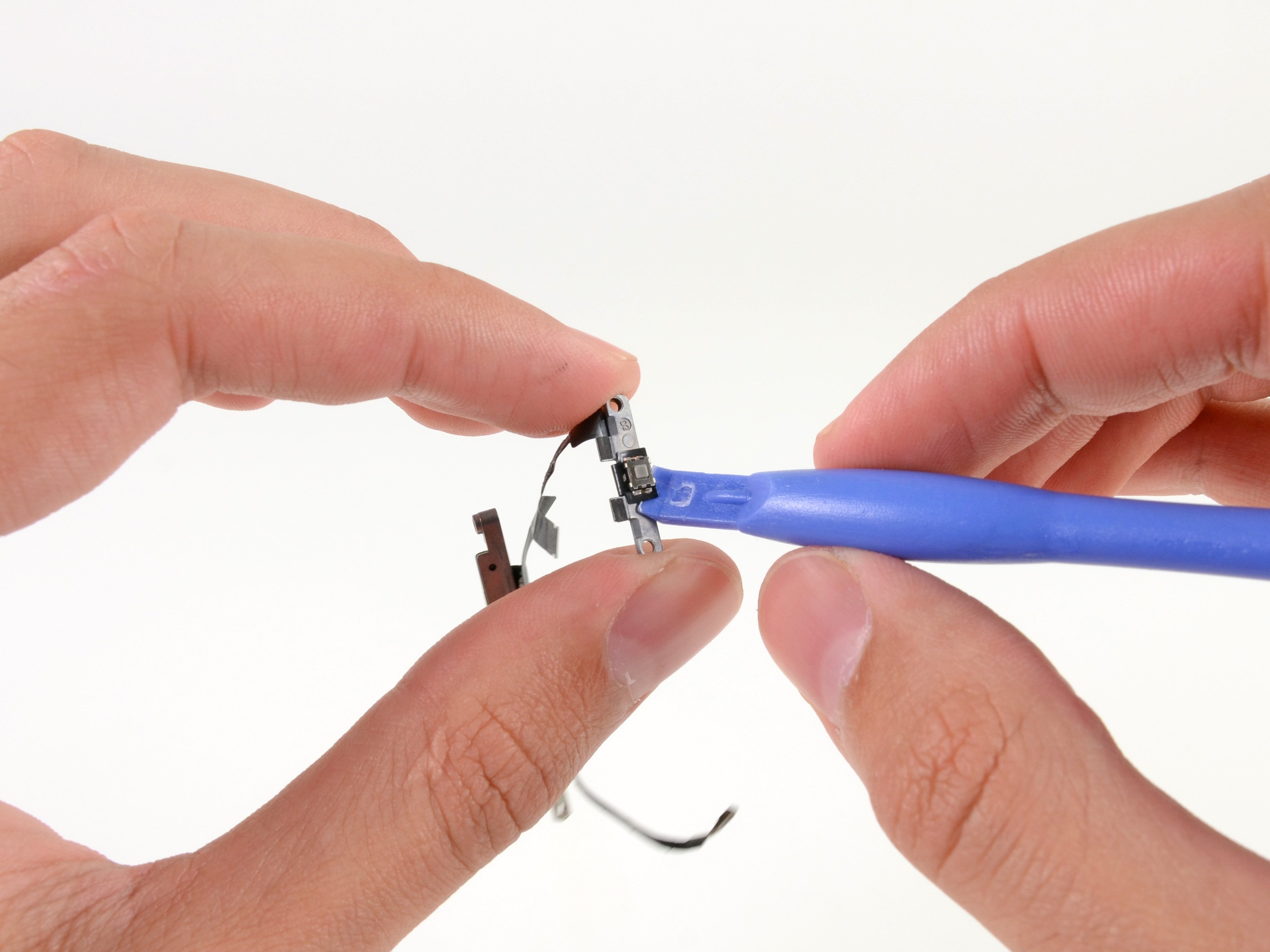iPad 3 Wi-Fi Battery Replacement
Duration: 45 minutes
Steps: 51 Steps
Is your iPad’s battery acting more like a paperweight? Bring it back to life by swapping out the old battery for a fresh one.
Step 1
For carousel microwaves: Ensure the plate spins smoothly. If your iOpener gets stuck, it might overheat and cause damage.
Before you dive in, give that microwave a quick clean! Any gunk hanging out at the bottom might just end up stuck to the iOpener. Trust us, it’s worth the extra couple of minutes.
- Pop the iOpener right in the center of the microwave and let it get nice and warm. Make sure it's cozy in there!
Tools Used
Step 2
Don't let the iOpener get too hot during your repair adventure! Overheating can cause it to pop, and that's not something we want. Keep it under 100˚C (212˚F) for a safe and smooth repair.
If the iOpener looks like it's puffing up, give it some space. Definitely don't touch it.
If the iOpener feels too hot in the middle to handle, take a breather! Let it cool down a bit before heating it up again. A good iOpener should stay warm for up to 10 minutes, so don't rush it.
Microwave wattage can change how long you need to heat the iOpener. It’s good to go when it’s just a bit too warm to keep your fingers on comfortably.
- Pop the iOpener in the microwave for 30 seconds to get it nice and toasty.
- As the iOpener starts to cool down during the repair, give it a quick reheat in the microwave for another 30 seconds at a time. Keep it warm, keep it working!
Tools Used
Step 3
Heads up! The iOpener gets super hot, so handle with care. Wearing an oven mitt is a smart move to keep those fingers safe.
- Carefully take the iOpener out of the microwave by grabbing one of the flat ends, steering clear of the hot center to keep your fingers happy.
Tools Used
Step 4
The iOpener's going to be pretty toasty, so be sure to grab it by the tabs at the ends. No need to burn your fingers!
No microwave? No problem! Just pop your iOpener into a pot of boiling water to get it nice and toasty.
- Grab a pot or pan and fill it up with enough water to give your iOpener a nice cozy bath.
- Crank up the heat until the water bubbles like it just heard a good joke. Then, switch off the heat.
- Carefully drop your iOpener into the warm water for about 2-3 minutes. Make sure it’s getting a good soak!
- Using some trusty tongs, fish out the warm iOpener from its bath.
- Give the iOpener a nice towel dry, because nobody likes a soggy tool.
- And just like that, your iOpener is all set to go! If it needs a little warmth again, just repeat the heating process.
Tools Used
Step 5
Put on those safety glasses to keep your eyes safe, and make sure to handle that LCD screen with care — we don’t want any surprises!
This will help keep those pesky glass shards contained and ensure your display has the support it needs while you're gently prying and lifting it up.
- If your display glass is cracked, it’s a good idea to prevent any more breakage and keep things safe while you work by sticking on some tape.
- Cover the entire display with overlapping strips of clear packing tape, making sure every inch of the screen is sealed up.
- Follow the guide as best as you can, but a heads-up: once that glass is cracked, it might keep breaking as you work. Don’t worry, just grab a metal prying tool to help scoop out the glass if needed.
Step 6
Heads up! Since you might be handling some broken glass here, it’s a smart move to rock some safety glasses to keep those sneaky shards from causing trouble.
- Place the iOpener flat along the right edge of the iPad, pressing it down so it makes solid contact with the surface.
- Give it about 90 seconds to work its magic before you try to lift the front panel.
Tools Used
Step 7
Getting the opening tool's wedged tip between the glass and plastic might take a little muscle. Take your time and gently wiggle the plastic tool back and forth until it slides in. Patience is key!
- Spot the little gap in the iPad's adhesive ring located in the upper right corner, about 2.0 inches (~5 cm) down from the top. It's like a secret doorway just waiting for you to take advantage of it!
- Now, line up your tool with the mute button. Gently slide the tip of your plastic opening tool into that gap between the front glass and the plastic bezel. Just a little push with the very tip of the tool will do the trick to widen that crack!
Step 8
- Carefully slide your tool right between the plastic display bezel and the front panel glass to get in just the right spot.
Step 9
- With the plastic opening tool snugly positioned between the front glass and plastic bezel, gently slide a plastic opening pick into the gap right next to your trusty tool. You've got this!
Step 10
- Gently take out the plastic opening tool from the iPad, then slide the opening pick a bit deeper under the front glass—about half an inch or so. You’ve got this!
Step 11
- While you're gently peeling off the adhesive on the right side of your iPad, give your iOpener another round of heat and place it along the bottom edge of your device. Take your time – you’ve got this!
Tools Used
Step 12
The adhesive is pretty strong, so you might need to apply a bit of elbow grease here. Take it slow and steady!
If you can spot the tip of the opening pick peeking out from under the front glass, gently pull it out just a tad. Don't worry, using the pick at this depth won't cause any harm, but it might leave some adhesive residue on the LCD. Just a heads up!
- While the iOpener is working its magic on the bottom edge, start loosening the adhesive along the right side of the iPad.
- Gently slide the opening pick down the edge, letting it do its thing as it frees the adhesive.
Tools Used
Step 13
If you find yourself still working on the iPad while it's cooling down, you might need to reposition the heated iOpener back onto the right edge as you peel off the adhesive. The exact timing depends on how long your iPad's been chilling out while you've been busy working your magic.
- If your opening pick decides to get cozy with the adhesive, just give it a little 'roll' along the edge of the iPad to keep freeing up that sticky stuff.
Tools Used
Step 14
- Before you take out the first opening pick from the bottom corner of the iPad, slide a second pick under the right side of the front glass to keep that sticky adhesive from making a comeback.
- Give the iOpener another warm-up, then slide it over to the top edge of the iPad to keep things nice and toasty.
Tools Used
Step 15
Hey there! Just a heads up, the Wi-Fi antenna is snugly attached to the bottom right corner of the rear case of your iPad with screws and a cable. Due to its position, it's super important to be careful while working with it – you wouldn't want to accidentally cause any damage to that little guy!
- Alright, folks, it's time to channel your inner repair ninja! Take a deep breath and get ready, because the next steps require some serious finesse.
- We'll be carefully peeling back the adhesive that's holding the antenna snugly to the front panel. Remember, we want to keep everything intact, so it's super important to handle the delicate parts connecting the antenna to the bottom of the iPad with care. Follow along closely, and you'll be a pro in no time!
Step 16
Hey there! Just a friendly reminder: don't slide that pick any further than the bottom right corner. Going beyond that could put a crimp in your Wi-Fi antenna. Let's keep everything working smoothly!
- Gently glide the opening pick around the bottom right corner of your iPad, freeing up that adhesive like a pro.
Step 17
Carefully slide the opening pick along the bottom right edge of the front panel. The Wi-Fi antenna hangs out near the corner, so take it slow to avoid accidentally cutting through its adhesive.
Keep the pick tucked just a smidge under the front glass—about 1/8" (3 mm) of the tip should stay hidden there. Don’t yank it all the way out!
- Gently glide the tip of your opening pick along the bottom edge of the iPad. This will help release the adhesive that's holding the Wi-Fi antenna in place.
Step 18
- Once you've navigated past the Wi-Fi antenna, which is about 3 inches (75 mm) from the right edge or right by the home button, pop that opening pick back in all the way.
- Now, slide the pick to the right to break free the adhesive that's holding the Wi-Fi antenna to the front glass.
- Remember, the antenna is connected to the bottom of your iPad with screws and a cable. This step is crucial as it safely detaches the antenna from the front panel, so when you lift the panel off, the antenna stays intact and happy!
Step 19
Keep your iOpener's heat game strong—don't go over a minute at a time! And remember to give it a cool-down period of at least two minutes before the next round. You're doing great!
If the adhesive has gotten a bit too cool along the bottom edge, just pop that iOpener back in the heat for a bit to warm things up where you're working.
- Keep sliding the opening pick along the bottom edge of the iPad, carefully pulling it out enough to curve around the home button, then slide it back in about half an inch (10 mm) once you’ve gotten past the home button.
Tools Used
Step 20
On iPad 4 models, gently insert the pick to about 1/2 inch (10 mm) into this spot. This will keep you clear of the home button ribbon cable and avoid any accidental damage. Take it slow and steady—you've got this!
- Keep gently peeling away the adhesive along the bottom edge of the iPad until it's all released. You're almost there!
- Once you've got that, slide an opening pick in and leave it nestled under the front glass near the home button. It's like a little friend holding the space for you!
Step 21
- Pop the iOpener in the microwave to warm it up, then place it on the left edge of the iPad to gently heat the adhesive in that area.
Tools Used
Step 22
If the adhesive's feeling a bit stubborn and has cooled down too much, just pop the iOpener along the top edge again and keep going. If it's cooled off too much, a quick reheating will do the trick. Stay on track, you're doing great!
- Gently glide the opening pick along the top edge of your iPad, giving it a little tug to navigate around the front-facing camera bracket.
- The adhesive here is pretty strong, so you might need to bring out your inner strength! Take your time and be cautious to avoid slipping and causing any harm to yourself or your iPad.
- If the opening pick feels like it's stuck in the adhesive, try 'rolling' it as shown in step 9.
Tools Used
Step 23
If the adhesive is feeling nice and warm, go ahead and take that iOpener off the iPad for easy access. But if it's still a bit clingy, no worries! Just give the iOpener another heat-up and pop it on the left edge while you get to work.
- Keep peeling away that sticky adhesive at the top edge of your iPad, and gently maneuver the opening pick around the top left corner like a pro!
Tools Used
Step 24
The digitizer cable is hanging out about 2" (50 mm) from the bottom of the iPad. When you’re sliding that pick, stop when you get about 2.25" (60 mm) from the bottom of the iPad. You've got this!
- Gently slide your opening pick along the iPad’s left edge to loosen the adhesive bit by bit. The adhesive here is pretty thin because of the digitizer running along the side, so keep the pick shallow—no deeper than about 10 mm (half an inch)—to avoid any accidental damage.
Step 25
Hey there! Just a heads up: the bottom of that digitizer cable is hanging out only about an inch (25 mm) from the bottom of the iPad. So, take your time and be gentle—let's make sure we don't accidentally snip that little guy!
- Slide the opening pick that’s still tucked under the bottom edge of the iPad to gently release the adhesive around the bottom left corner.
Step 26
It seems that some of the adhesive around the edges of your iPad might have decided to stick around a bit too long. If you're finding that the front glass is still clinging on, grab a pick and gently slide it under the edge where it's stuck. Give that adhesive a little 'snip snip' to help it let go!
- With one of those handy opening picks, gently lift the bottom right corner of the iPad and give it a little pinch with your fingers.
Step 27
Watch out for any sticky glue still hanging on, and use an opening pick to carefully slice through any adhesive keeping the front panel stuck down.
- Grab your iPad by the top and bottom right corners, and gently twist the front glass away from the device. You've got this!
- As you put everything back together, take a moment to pamper that LCD! Use a microfiber cloth and a burst of compressed air to whisk away any dust or fingerprints before you seal the glass back on.
Step 28
- Unscrew the four tiny 2 mm Phillips #00 screws holding the LCD to the aluminum frame—time to free that screen!
Step 29
Handle that LCD with care! The ribbon cable is a bit delicate, so give it the gentle touch it deserves – too much bending could lead to a break!
- Grab a plastic opening tool or spudger and gently pry up the right edge of the iPad's LCD.
- Swing the LCD up from its left edge and carefully lay it flat on top of the front panel.
Tools Used
Step 30
- Grab your trusty spudger and gently lift that piece of tape off the LCD ribbon cable connector like you're peeling back a cozy blanket.
Tools Used
Step 31
- Gently lift the little flap on the LCD ribbon cable's ZIF connector—think of it as opening a tiny door.
- Carefully wiggle the LCD ribbon cable out of its spot on the logic board using your fingers or tweezers.
Step 32
- Carefully lift the LCD away from the front panel without making contact with the screen itself. You've got this!
Step 33
Carefully peel back the tape holding the digitizer ribbon cable to the logic board if it’s getting in the way.
- Gently lift the little flap on each of the digitizer ribbon cable ZIF connectors — you’re almost there!
Step 34
- Gently slide the flat end of your spudger under the digitizer ribbon cable to break up the adhesive holding it down.
- Slowly and carefully wiggle the digitizer ribbon cable straight out from its connectors on the logic board—no sudden moves!
Tools Used
Step 35
- Gently lift the digitizer ribbon cable and use the flat edge of a spudger to carefully break the adhesive that's holding the cable to the rear aluminum case. You've got this!
Tools Used
Step 36
- Give that digitizer ribbon cable a gentle tug with your fingers to free it from its cozy spot in the aluminum frame.
- Carefully lift the front panel off the iPad and set it aside. You're doing great!
Step 37
- Gently peel back and take off the piece of electrical tape hiding the headphone jack assembly cable connector.
- With the tip of your trusty spudger, lift up the little retaining flaps on both ZIF connectors that hold the headphone jack cable to the logic board in place.
Tools Used
Step 38
- Gently slide the flat end of a spudger under the headphone jack assembly cable to free it from the adhesive that's keeping it snug against the rear aluminum frame.
- Carefully pull the headphone jack assembly cable straight out of its cozy spot on the logic board.
Tools Used
Step 39
Carefully peel away any electrical tape hiding the Wi-Fi antenna, speaker cable, and dock connector cable, if you find any.
Step 40
Be sure to pry gently under the connector, not on the socket itself. Going after the socket can cause some serious damage, and we want to keep things safe and sound!
- Time to get connected! Carefully unplug the following cables from their cozy homes on the logic board:
- Wi-Fi antenna cable
- Speaker connector cable.
- Dock connector cable.
Step 41
- Let's get those four screws out to free the logic board from the rear aluminum panel:
- Three 2.1 mm Phillips #00 screws
- One 2.5 mm Phillips #00 screw
Step 42
- Carefully lift the logic board out from the back case of your iPad – you’re making great progress!
Step 43
Be super careful when removing the battery from your iPad! You don't want to accidentally puncture it. Batteries have some not-so-friendly chemicals inside that can be a problem if they end up where they shouldn't. Take your time, and if you feel unsure, you can always schedule a repair.
In the following steps, we'll gently peel away the adhesive from under the battery, taking it slow and steady—just 2 inches at a time. This way, we keep the battery happy and stress-free!
- The third generation iPad’s battery is glued down super tight to the aluminum frame with a serious amount of strong adhesive, so get ready to put on your patience hat!
Step 44
That adhesive is super strong! Getting it to loosen up takes a bit of muscle. Take your time and be careful—keep that metal spudger steady and don’t let it slip. You've got this!
- Gently slide the flat end of a metal spudger under the battery, aiming for the bottom area of the iPad.
- Carefully wiggle the metal spudger about 1.5 inches underneath the battery to break through that sticky adhesive.
Tools Used
Step 45
- Just like we did before, gently slide the spudger about 2 inches under those pesky adhesive strips. You've got this!
Tools Used
Step 46
- Gently slide that metal spudger under the battery connector to free it from the sticky adhesive holding it down.
Tools Used
Step 47
- Keep on peeling away that adhesive up at the top of the battery. You're doing great!
Step 48
When you slide the spudger further under the battery, try to keep it as flat as you can against the rear case. This will help prevent the battery from bending. Slow and steady wins the race!
- Pick up where you left off and slide that trusty metal spudger about two inches deeper under the battery. You're doing great!
- Now, let's keep the momentum going and repeat this for those remaining adhesive strips. You're almost there!
Tools Used
Step 49
- Just like we did before, keep on loosening that adhesive along all the strips, going down about 4 inches. You've got this!
Step 50
- For the final stretch, slide the metal spudger all the way to the right edge of your iPad. You're almost there!
- Repeat this for each of the adhesive strips until they’re all taken care of.
Tools Used
Step 51
Grab your trusty metal spudger and gently pry away any stubborn adhesive still clinging to the battery. A little patience goes a long way here!
- To put your device back together, just follow these steps backward and you'll be all set! If you hit a snag, remember you can always schedule a repair for some extra help.
























